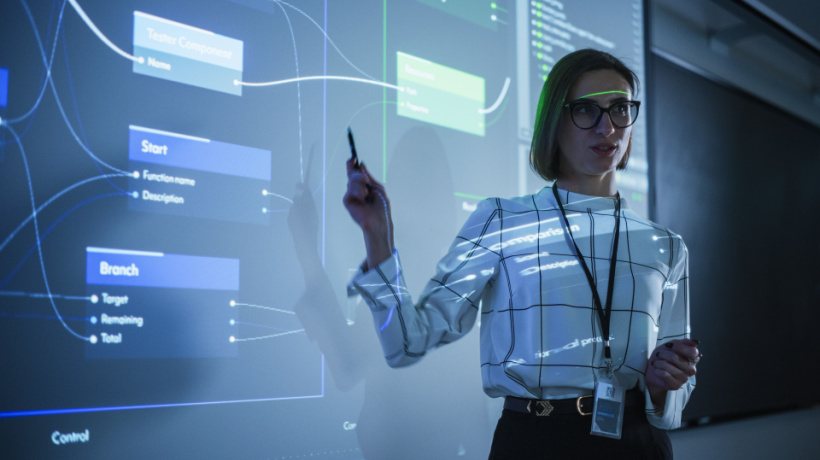
Training Teachers On The Use Of EdTech Tools
Introducing EdTech devices or software in the classroom isn’t enough. Teachers need proper training and support to use EdTech confidently and creatively. But it’s not just for teachers; students can also use laptops, notebooks, and tablets in class to enrich their educational experience. And if you’re wondering who manages all of this, the answer is the classroom teacher. Teachers balance technology use while preparing lessons, managing student behavior, teaching content, and supporting their learners when they face problems with the tools. While there’s a need for teachers to build their tech expertise, it’s not always easy. So, start by taking a look at how you can create the perfect EdTech teacher training program to help faculty members experience a smooth transition to the digital classroom.
How To Create Effective Teacher Training Programs
Needs Assessment
Before jumping into an EdTech teacher training program, it’s essential to take the time to evaluate the needs and goals of teachers and students. First, think about what you want to achieve. Are there any challenges or gaps that you want to address? Maybe you want to boost student engagement, improve outcomes, or help teachers feel more confident with technology. Next, think about the skills you want your teachers and students to have. Do you want them to be better at collaborating, problem solving, or using digital tools? Finally, consider the EdTech resources that are available to you. What tools can you use to help achieve your goals?
Tailored Curriculum
Now that you know everyone’s skills gaps, it’s time to create content that’s relevant and focuses on addressing them. Offer content that is tailored to your teachers’ subject areas, grade levels, and teaching styles. You must also make certain that the content is flexible and adaptable to your teachers’ changing needs and interests. One way to do this is by providing self-paced courses which let your teachers pick the topics that work best for them whenever they find the time. However, don’t forget to keep things up to date. The content needs to be constantly refreshed since EdTech is a field that keeps on advancing.
Hands-On Training
Just sitting through lectures or passive activities can be a bit of a snoozefest, and you want to make sure that your teachers get the most out of their training. So, you can incorporate hands-on activities, discussions, and peer learning opportunities into the training. This might include virtual simulations, serious games, case studies, or project-based learning to help them practice and apply their EdTech skills. By making it more interactive and engaging, they’re more likely to stay motivated and interested in the process. Of course, you can always use online platforms, forums, or communities to facilitate communication and collaboration among your teachers. This way, they’re able to share ideas, ask questions, and learn from one another’s experiences.
Support
Some teachers may encounter these types of tools for the first time while others may not be quite familiar with technology. Providing support during training is crucial, and it can make or break the whole process. Make sure you offer ongoing help through resources, tutorials, feedback, and even access to support from the tools’ vendors. This will help you evaluate the teacher training program, too. For example, if you provide coaching, mentoring, or online help to assist your teachers with any challenges or questions they may have, you can also use surveys and quizzes to assess the effectiveness and improvement of your training.
Benefits Of EdTech Teacher Training
Enhance Teaching Strategies
One of the perks of implementing EdTech is to help teachers make their lessons more fun and engaging. So, when you train your teachers to use the tech, it’s nice to know the ins and outs, such as the tool’s features, but make sure the material goes beyond the basics. The program should focus more on how to apply technology in class so that educators will become familiar with modern and innovative teaching methods. This helps both faculty and students make sense of the digital world.
Personalize Learning
EdTech offers a range of digital tools and applications that can be customized to suit the individual needs and preferences of teachers. They can choose from a diverse range of courses on various subjects and pick the ones that best meet their needs and interests. This approach ensures that everyone learns only what’s relevant to their teaching practice, from improving their methods to incorporating technology in the classroom. This gives them plenty of opportunities to manage their time and workload however they want, making them more efficient at their roles as well.
Improve Student Engagement
When teachers learn how to use and incorporate interactive whiteboards, Virtual and Augmented Reality, and gamification, they can make learning more exciting and meaningful for students. Many EdTech tools allow teachers to present content in a dynamic way while also letting them adapt their teaching methods to suit the requirements of their students. As a result, students not only learn the subject matter more effectively but also enjoy the learning process as a whole.
Give Constructive Feedback
Instead of spending hours manually grading papers, teachers can use platforms and apps to not only grade but also design and deliver quizzes, assignments, and other types of assessments. These tools also provide teachers with useful data and insights, allowing them to give students constructive and on-the-spot feedback. So, learners always know what they need to improve, and teachers offer targeted help.
Conclusion
EdTech could be a game-changer, so training teachers about integrating it into their teaching methods is imperative in the digital world. But there are some potential pitfalls to consider. While EdTech offers many of the abovementioned benefits, it requires proper infrastructure and digital skills, and there’s a risk of relying too much on technology instead of face-to-face interactions. Fortunately, a well-planned approach that puts the teacher and student experience first can help you achieve tech success.






